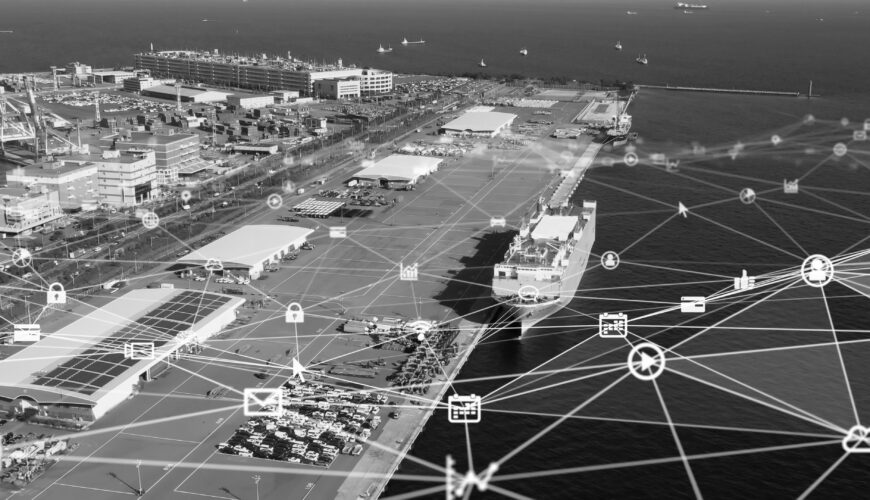Geographic center of gravity (GOC) computer models balance inbound/outbound freight costs (ocean, rail, container, truckload, LTL, parcel, and white glove) with strategic service levels to answer these and many more questions:
- How many distribution centers should be operated?
- Large Centralized/Consolidated DC?
- Smaller DCs Closer to Customer?
- Hub and Spoke DC Model?
- Break-Bulk or Cross-Dock Model?
- Micro-Warehouse Model?
- Where geographically should the DCs be located?
- How large should each facility be?
- Which SKUs and inventory depths should reside in each DC?
- Which customers should be serviced from each DC?
- What port(s) of entry and transportation mode(s) should be leveraged?
OPSdesign Consulting can map your existing supply chain network, service, and cost structure, build computer models of viable alternatives, and perform a comparative analysis to determine the one that best meets your corporate goals and objectives.
Even within a specific industry and market channel, the answers to these questions differ for every company due to its unique circumstances. Companies are likely burdened by existing sub-optimal infrastructure (or other liabilities), which must be factored into the model. As a result, the question is often not which supply chain network is best, but rather, does the best network provide sufficient service/cost benefit to warrant the costs and risks associated with the changeover?
This paper explores the principles and applications of Geographic Center of Gravity in distribution network modeling, providing insights into how businesses can strategically position their facilities to minimize transportation costs, enhance logistics performance, and streamline overall supply chain operations.
The Significance of Geographic Center of Gravity in Supply Chain Optimization
In an era where globalized trade and customer demands continually reshape supply chain dynamics, businesses are in constant pursuit of innovative solutions to optimize their distribution networks. The Geographic Center of Gravity model, with its strategic approach to determining the optimal location of facilities, warehouses, and distribution centers, offers a significant edge. It aims to not just minimize transportation costs but also to improve overall supply chain efficiency, making it a crucial tool in the arsenal of businesses striving for excellence in supply chain management.
Principles of Geographic Center of Gravity:
- Definition and Calculation:
The Geographic Center of Gravity represents the weighted average location of a set of geographical points. In supply chain modeling, these points may signify customer locations, production facilities, or distribution centers. The COG is calculated by considering each point’s latitude, longitude, and associated weight (such as shipment volume).
- Factors Influencing COG:
Various factors influence COG, including shipment volume, transportation costs, and the geographical distribution of demand. Understanding these factors is crucial for accurate modeling and strategic decision-making.
Applications in Supply Chain Optimization:
- Facility Location Planning:
The COG model is not just a theoretical concept but a practical tool that assists businesses in determining the optimal location for new facilities. By considering the geographical distribution of customers, suppliers, and production sites, this strategic planning minimizes transportation distances and associated costs, leading to tangible benefits for the business.
- Inventory Placement and Allocation:
By calculating the COG, businesses can make informed decisions about inventory placement. This includes determining which warehouses should stock specific products based on demand patterns and minimizing transportation distance.
- Route Optimization:
The COG model contributes to route optimization by guiding the development of efficient transportation routes. It helps minimize the distance traveled and reduces fuel consumption and transportation costs.
Geographic Center of Gravity Modeling Techniques:
- Mathematical Modeling:
Businesses can calculate the COG accurately by employing mathematical algorithms, such as linear programming and optimization techniques. These models consider various constraints, including facility capacities, transportation costs, and service level requirements.
- Geospatial Technologies:
Geographic Information System (GIS) tools and mapping technologies play a crucial role in the Geographic Center of Gravity model. They are not just visual aids but powerful tools that allow businesses to integrate geographical data with other relevant information. This integration provides a comprehensive view of the supply chain network, enhancing your understanding and decision-making capabilities.
Challenges and Considerations:
- Dynamic Nature of Supply Chains:
Supply chains are dynamic and influenced by changing market trends, customer demands, and external factors. Continuous monitoring and periodic reassessment of the COG are essential to ensure the model remains aligned with the evolving business landscape.
- Data Accuracy and Timeliness:
Geographic Center of Gravity modeling relies heavily on accurate and up-to-date data. Businesses must invest in reliable data sources and advanced technologies to ensure the precision of the model’s calculations.
Future Trends and Innovations:
- Integration with Advanced Technologies:
The future of COG modeling is promising and exciting, as it holds the potential for integration with emerging technologies such as artificial intelligence (AI) and machine learning (ML). These technologies can revolutionize the accuracy of predictions by considering complex variables and dynamic factors, opening new horizons for supply chain optimization.
- Real-Time COG Analysis:
Advancements in data analytics and connectivity will enable real-time analysis of the COG. Businesses can respond promptly to changes in demand or disruptions in the supply chain, optimizing their operations on the fly.
Leveraging Geographic Center of Gravity for Strategic Supply Chain Management
The Geographic Center of Gravity model is a powerful tool for businesses seeking to optimize their supply chain operations. By strategically positioning facilities and allocating resources based on calculated COG, organizations can achieve significant cost savings, enhance efficiency, and respond effectively to the challenges of a dynamic market. As businesses continue to explore innovative solutions for supply chain optimization, the COG model remains a key element in their strategic arsenal.


